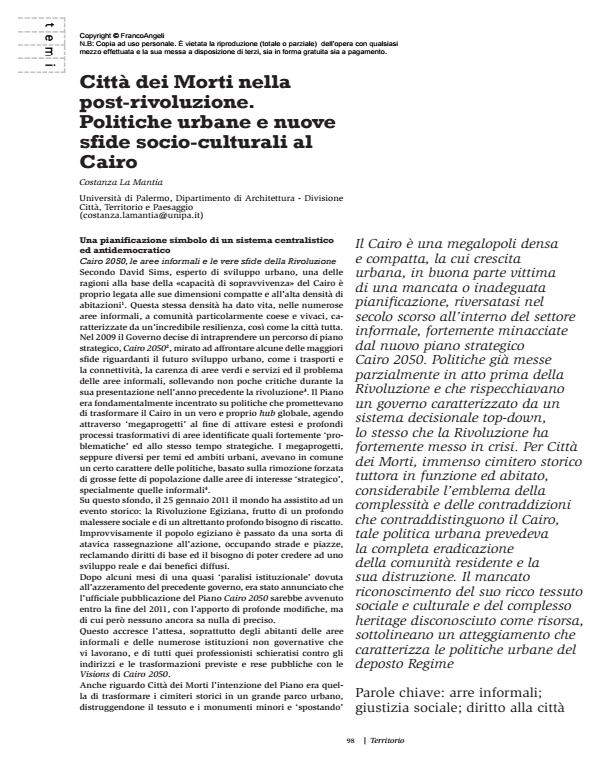City of the Dead after the revolution. Urban policies and new socio-cultural challenges for Cairo
Journal title TERRITORIO
Author/s Costanza La Mantia
Publishing Year 2012 Issue 2012/61 Language Italian
Pages 6 P. 98-103 File size 1275 KB
DOI 10.3280/TR2012-061017
DOI is like a bar code for intellectual property: to have more infomation
click here
Below, you can see the article first page
If you want to buy this article in PDF format, you can do it, following the instructions to buy download credits

FrancoAngeli is member of Publishers International Linking Association, Inc (PILA), a not-for-profit association which run the CrossRef service enabling links to and from online scholarly content.
Cairo is a dense, compact megalopolis with an urban growth, mostly the victim of inadequate or non-existent planning, that spilled out during the last century into the informal sector and is powerfully threatened by the new Cairo 2050 strategic plan. Policies already partially put into action before the revolution reflected a government characterised by a top-down system of decision-making, the same system the evolution strongly placed in jeopardy. For the City of the Dead, an immense historic cemetery, still functioning and still inhabited, and a major symbol of the complexity and contradictions that distinguish Cairo, this urban policy envisaged the complete eradication of the resident community and its destruction. The lack of recognition of its rich social and cultural fabric and the complex heritage unrecognised as a resource, underline an attitude that characterises the urban policies of the deposed Regime.
Keywords: Informal rents; social justice; right to a city
Costanza La Mantia, Città dei Morti nella post-rivoluzione. Politiche urbane e nuove sfide socio-culturali al Cairo in "TERRITORIO" 61/2012, pp 98-103, DOI: 10.3280/TR2012-061017